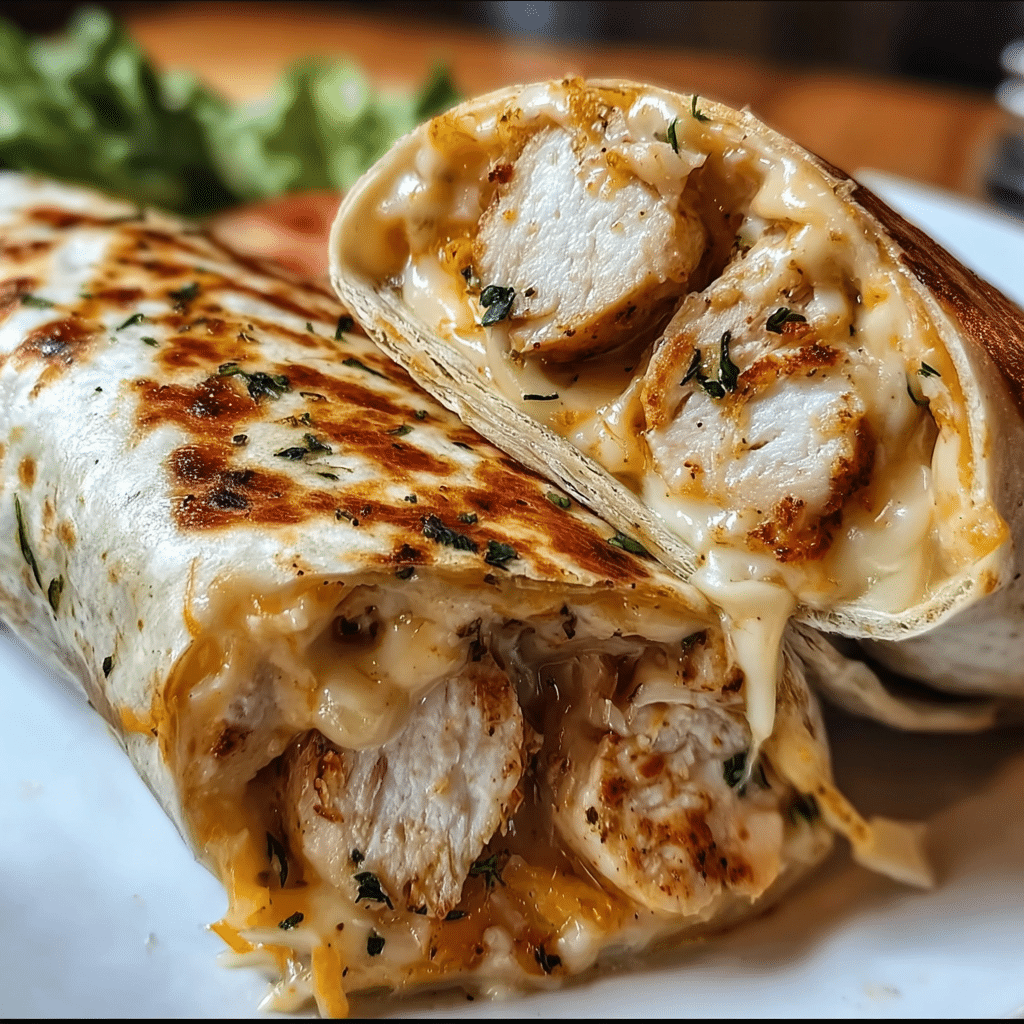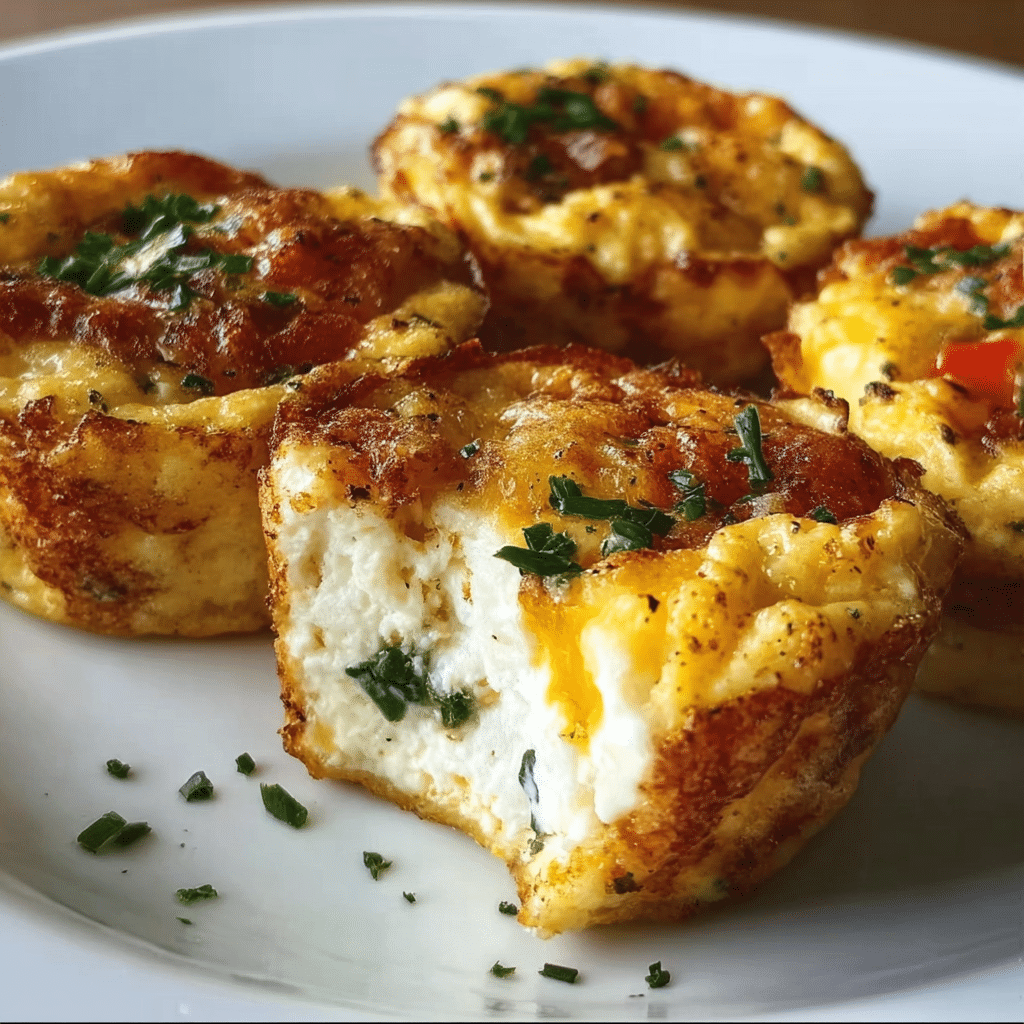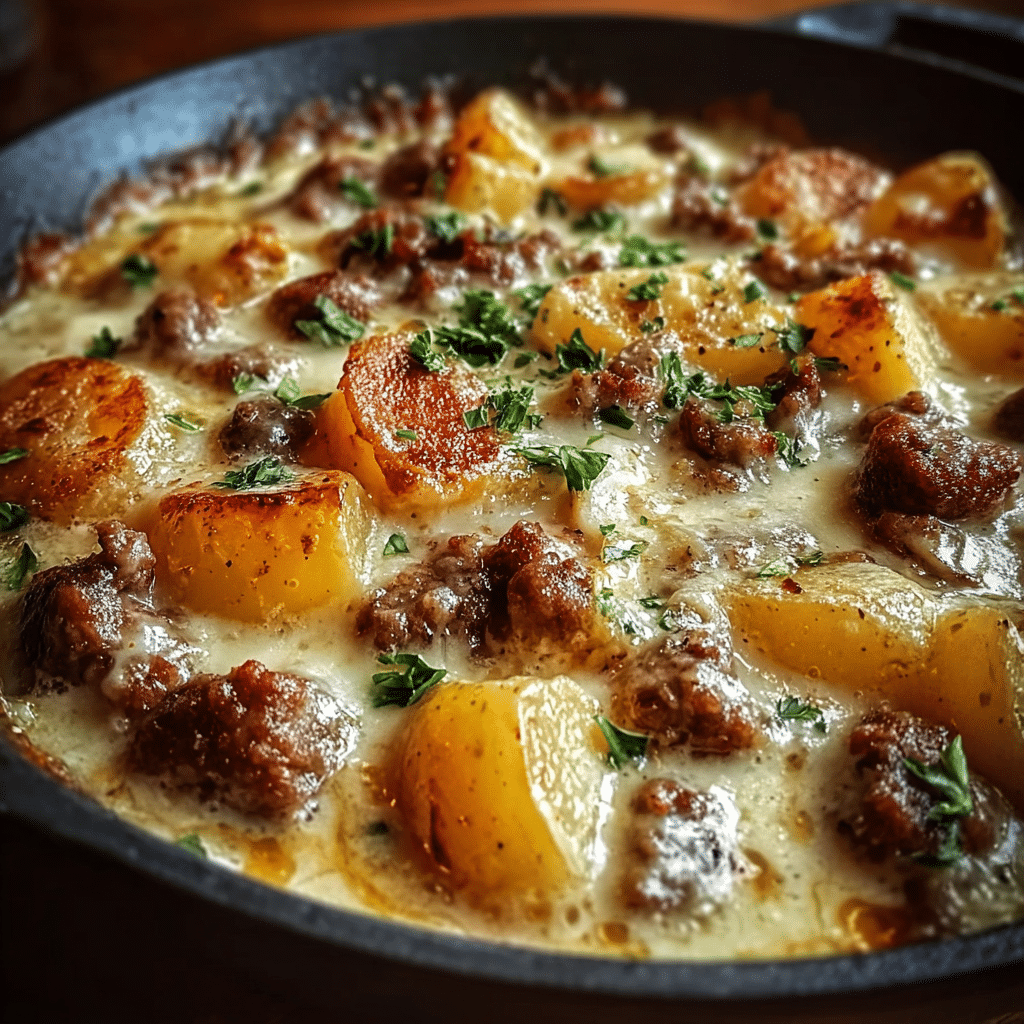Balsamic baked chicken is not just a recipe; it’s a culinary experience that brings warmth and familiarity to the dinner table. I first stumbled upon this delightful dish during a family gathering at my aunt’s house. The aroma of marinated chicken wafting through the air was irresistible, and I remember feeling an overwhelming sense of comfort as I approached the kitchen. My aunt, known for her culinary prowess, had been experimenting with balsamic vinegar, and the result was nothing short of magical. As I took my first bite, the tender chicken, infused with the rich, tangy flavor of balsamic, left an indelible mark on my taste buds. That moment sparked a passion for cooking that still burns brightly today.
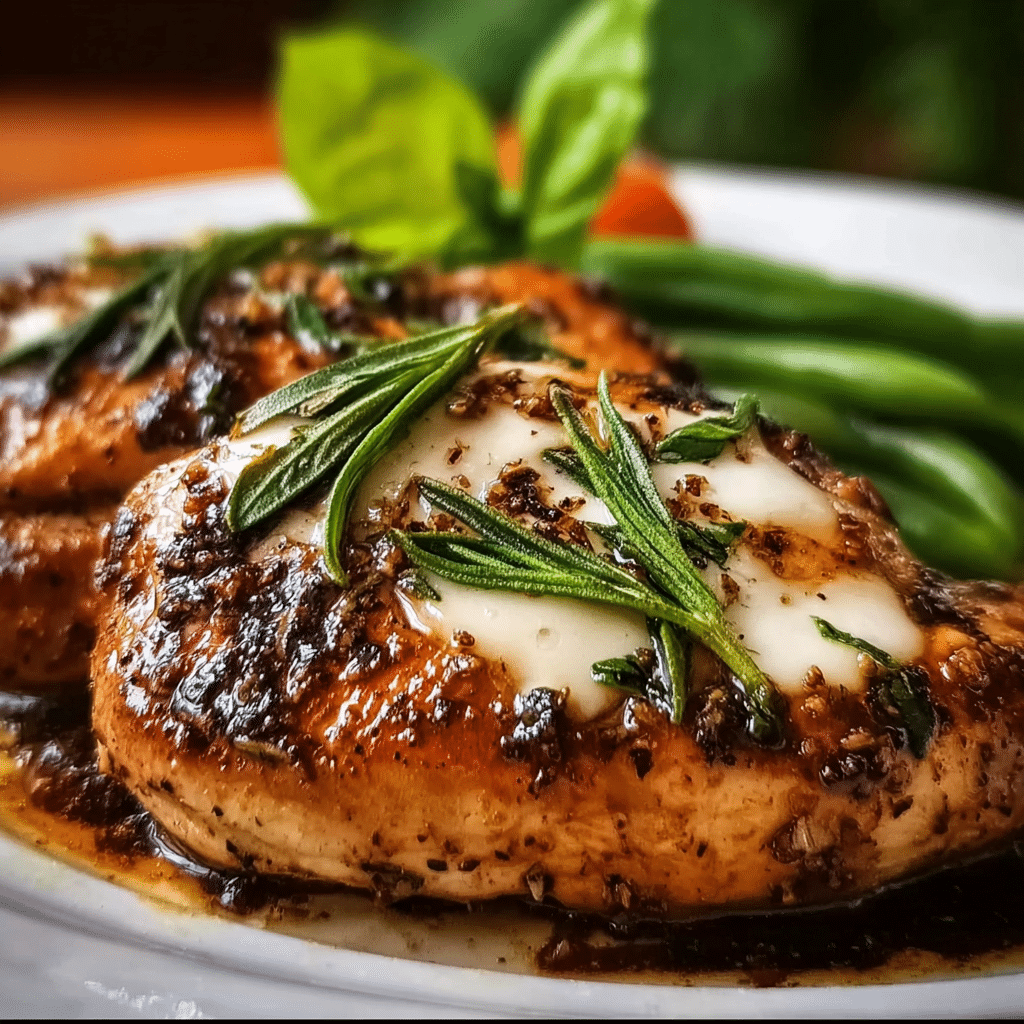
The Story Behind This Recipe
What I love about balsamic baked chicken is its ability to adapt and shine in various settings. The recipe has a simple elegance that allows it to stand out whether it’s a casual weeknight dinner or a festive gathering. Over the years, I’ve tweaked my aunt’s original recipe, adding my own flavors and twists, but the essence of that first bite remains. The combination of juicy chicken and the deep, complex notes of balsamic vinegar resonates with my family’s love for food, tradition, and togetherness. It’s remarkable how a single dish can encapsulate so many memories and emotions.
But where did this beloved recipe originate? Balsamic vinegar itself is rooted in Italian history, particularly from the Emilia-Romagna region, known for producing high-quality balsamic that has been aged for years. This vinegar, with its sweet, tangy flavor, has made its way into kitchens around the world, inspiring countless recipes, including the ever-popular balsamic baked chicken. The dish has grown in popularity not just for its taste but also for its ease of preparation, making it a go-to for busy families seeking quick yet flavorful dinner solutions.
Why You’ll Love This Dish
The beauty of balsamic baked chicken lies in its versatility. It’s a dish that can be prepared in under an hour, making it perfect for those hectic weeknights when time is of the essence. The marinade itself is a simple blend of balsamic vinegar, olive oil, garlic, and herbs, which means that you can whip it up in no time. As the chicken bakes, the flavors meld beautifully, creating a deliciously tender and juicy meal that is both satisfying and wholesome. It’s a one-pan wonder that minimizes cleanup, which is always a plus in my book!
Seasonally, balsamic baked chicken shines in spring and summer when fresh herbs and vegetables are in abundance. You can serve it alongside grilled asparagus or a vibrant garden salad, taking full advantage of the seasonal produce. However, it’s equally delightful in the cooler months when served with roasted root vegetables, bringing a sense of comfort and warmth to the table.
For me, this dish represents more than just a meal; it’s a bridge that connects generations. I often find myself teaching my children how to make it, sharing stories of my aunt and the love that went into her cooking. Every time we make balsamic baked chicken together, we’re not just preparing dinner; we’re creating lasting memories, reinforcing our family bonds through the simple act of cooking. It’s these moments that make the dish truly special.
As you read on, you’ll discover tips for perfecting your own balsamic baked chicken, variations to suit your taste, and insights into how this dish can fit into your family’s culinary repertoire. I promise that this recipe will soon become a cherished part of your family meals, just as it has in mine.
The Rich History and Cultural Significance of balsamic baked chicken
The rich history and cultural significance of balsamic baked chicken are deeply intertwined with the origins of balsamic vinegar itself. Balsamic vinegar hails from Modena, Italy, where it has been crafted since the Middle Ages. The traditional method of producing balsamic vinegar involves cooking down grape must, which is then aged in a series of wooden barrels. The result is a complex, sweet, and tangy vinegar that has become a staple in many kitchens around the world.
Origins and History
While the precise origins of balsamic baked chicken are harder to pin down, it is clear that the dish draws heavily on Italian culinary traditions. The concept of marinating meats in vinegar is not unique to one region; it’s a practice that has been embraced in various forms across different cultures. The use of balsamic vinegar in chicken dishes began gaining traction in the United States in the late 20th century as Italian cuisine became more popular.
As the dish evolved, home cooks and chefs alike began to experiment with balsamic baked chicken, integrating local ingredients and personal touches. Today, you’ll find numerous variations of the recipe, each reflecting the tastes and preferences of those who make it. From adding honey for sweetness to incorporating different herbs and spices, the possibilities are endless. This adaptability has contributed to the dish’s widespread appeal, making it a beloved addition to family dinner tables across the globe.
Cultural Significance
Balsamic baked chicken is often served during family gatherings, celebrations, and Sunday dinners, embodying the Italian ethos of “la dolce vita,” or the sweet life. It’s a dish that encourages sharing and connection, making it ideal for special occasions where family and friends come together. In Italian culture, food is not just sustenance; it’s an expression of love and a means of nurturing relationships.
Moreover, the dish has found a place in modern culinary scenes, with many chefs showcasing it in restaurants that focus on farm-to-table dining. The emphasis on fresh, high-quality ingredients resonates with diners looking for authentic and flavorful experiences. Balsamic baked chicken has become a symbol of comfort and simplicity, a reminder that good food can bring people together regardless of background or culinary expertise.
Nutritional Benefits
Beyond its delicious flavor, balsamic baked chicken offers a range of nutritional benefits that make it a smart choice for health-conscious families. Chicken breast is a lean source of protein, essential for muscle growth and repair, making it perfect for those looking to maintain a balanced diet. The addition of balsamic vinegar not only enhances the flavor but also contributes antioxidants that can help reduce inflammation.
Incorporating fresh herbs like rosemary or thyme not only elevates the dish’s flavor profile but also adds vitamins and minerals that are beneficial for overall health. When served with a side of seasonal vegetables, balsamic baked chicken transforms into a well-rounded meal that satisfies both the palate and the body.
As we journey through the world of balsamic baked chicken, remember that this dish is more than just a recipe; it’s a celebration of culinary history, cultural significance, and the joy of sharing meals with loved ones. Whether you’re making it for a busy weeknight dinner or a special gathering, the magic of balsamic baked chicken lies in its ability to bring people together, creating memories that last a lifetime.
Essential Ingredients for Perfect balsamic baked chicken
When it comes to creating the perfect balsamic baked chicken, the ingredients you choose can make all the difference. Each component not only contributes to the flavor but also plays a crucial role in the overall texture and appeal of the dish. In this section, we’ll dive deep into the essential ingredients you’ll need for this delightful recipe, exploring their importance, quality indicators, and even some shopping tips to ensure you’re getting the best of the best.
Essential Ingredients
- 4 6-ounce boneless skinless chicken breasts – The star of the show! Opt for chicken that appears pink and moist, with no pungent smell. Organic chicken is often a great choice for better taste and health benefits.
- 1/4 cup balsamic vinegar – A crucial ingredient that provides tanginess and depth. Look for high-quality aged balsamic vinegar, which will have a richer flavor profile. Check for a thick consistency and a slightly sweet aroma.
- 2 tablespoons honey – Honey balances the acidity of the vinegar beautifully. When selecting honey, local varieties can enhance the flavor and support your local beekeepers. Raw honey is the best choice for maximum health benefits.
- 2 tablespoons olive oil – Extra virgin olive oil brings richness to the dish. Look for a vibrant green color and a fruity aroma; avoid oils that are too light or have a musty smell.
- 2 teaspoons Dijon mustard – This adds a slight kick and depth of flavor. Choose a smooth variety for better mixing, and ensure it’s made with quality ingredients without unnecessary additives.
- 1 teaspoon dried basil – Dried herbs are potent and add a wonderful aroma. Make sure it’s fresh by checking the expiration date; a vibrant green color indicates good quality.
- 1 teaspoon salt – Essential for amplifying flavors. Consider sea salt or kosher salt for a more natural taste.
- 1/2 teaspoon black pepper – Freshly ground black pepper will offer the best flavor. Invest in a good pepper mill if you don’t have one yet.
- 4 garlic cloves, minced – Garlic adds an aromatic punch. Fresh garlic should be firm and free of green shoots.
- 2 pints cherry tomatoes, halved – These sweet little gems add freshness and color. Look for firm, bright tomatoes. In season, they’ll be at their sweetest and juiciest, typically from late spring through early fall.
- Chopped parsley for serving – A vibrant garnish that adds a splash of color and freshness. Opt for fresh parsley over dried for maximum flavor.
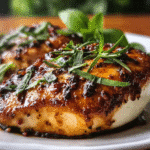
Balsamic Baked Chicken Breast
Ingredients
- 4 6 ounce boneless skinless chicken breast
- ¼ cup balsamic vinegar
- 2 tablespoons honey
- 2 tablespoons olive oil
- 2 teaspoons dijon mustard
- 1 teaspoon dried basil
- 1 teaspoon salt
- ½ teaspoon black pepper
- 4 garlic cloves minced
- 2 pints cherry tomatoes halved
- Chopped parsley for serving
Instructions
- Preheat oven to 425°F.
- Pat the chicken breasts dry with a paper towel. Cover the chicken breasts with plastic wrap and use a meat mallet or rolling pin to pound and flatten them to equal thickness. Place in a 9×13 oven-safe baking dish.
- In a small bowl, whisk together the balsamic vinegar, honey, olive oil, Dijon mustard, basil, salt, pepper, and garlic until well combined. Pour the marinade on top of the chicken and flip each chicken breast to evenly coat. Let the chicken marinate to soak up the flavor for at least 10 minutes.
- Slice the cherry tomatoes and add them to the baking dish all around the chicken.
- Bake for 20–25 minutes, or until meat thermometer inserted into thickest part of the chicken breast reads 165°F.
- Garnish with chopped parsley and serve with your favorite sides.
Shopping Tips
When shopping for balsamic baked chicken ingredients, quality is paramount. For chicken, sourcing from local farms or butchers can yield fresher, tastier meat. Many grocery stores now offer organic or free-range options, which can be a healthier choice. Similarly, for balsamic vinegar, seek out specialty shops or farmers’ markets where you can sample different varieties. The same goes for olive oil; consider purchasing from a brand that specializes in oils to ensure you’re getting something high-quality.
Seasonal ingredients, like cherry tomatoes, can be found at farmers’ markets or your local grocery store. During the off-season, you might opt for canned or frozen varieties, though fresh will always be best. If you’re looking to save money, buy in bulk, especially for pantry staples like honey, olive oil, and spices.
Substitutions and Alternatives
Cooking is all about flexibility, and your balsamic baked chicken can adapt to suit various dietary needs. If you’re looking for a low-carb option, substitute the honey with a sugar-free sweetener like agave or stevia. For those avoiding mustard, you can use a little bit of apple cider vinegar mixed with a dash of olive oil. The chicken can also be replaced with tofu or tempeh for a vegetarian version; just ensure to marinate longer to absorb flavors.
As for the garlic, if you can’t stand the strong flavor or are allergic, you can skip it or use garlic powder instead. And if you’re not a fan of basil, consider substituting with oregano or thyme, which also pair beautifully with chicken. Lastly, if you’re short on fresh parsley for garnishing, consider fresh cilantro or even green onions for a twist!
Understanding the role of each ingredient in your balsamic baked chicken not only enhances your cooking experience but also allows you to adjust the recipe to fit your palate or dietary needs. So grab your shopping list and get ready to create a dish that’s not only delicious but also tailored just for you!
Detailed Step-by-Step balsamic baked chicken Cooking Instructions
Cooking is an art, and when it comes to balsamic baked chicken, you’ll want to make sure every step is executed with care. There’s nothing quite like the aroma of chicken marinated in balsamic vinegar, honey, and garlic wafting through your kitchen, inviting friends and family to gather around the table. In this section, I will guide you through the detailed step-by-step cooking process, ensuring that you feel confident and excited to create this delightful dish.
Preparation Steps
- Gather Your Ingredients: Before diving into cooking, it’s essential to have all your ingredients measured and ready. This process, known as mise en place, allows you to focus on cooking without the distraction of searching for items. Measure out your balsamic vinegar, honey, olive oil, Dijon mustard, dried basil, salt, black pepper, minced garlic, cherry tomatoes, and chopped parsley.
- Preheat Your Oven: Set your oven to 400°F (200°C) to ensure it’s hot and ready for the chicken. A properly preheated oven is key to achieving that perfect golden-brown finish.
- Marinate the Chicken: In a mixing bowl, combine the balsamic vinegar, honey, olive oil, Dijon mustard, dried basil, salt, black pepper, and minced garlic. Whisk these ingredients together until they form a smooth marinade. Place the chicken breasts in a large resealable bag or shallow dish and pour the marinade over them. Seal the bag or cover the dish, then refrigerate for at least 30 minutes. This marination time allows the flavors to penetrate the chicken, making it juicy and flavorful.
Cooking Process
- Prepare the Cherry Tomatoes: While your chicken is marinating, wash and halve the cherry tomatoes. Place them in a baking dish. Drizzle a little olive oil over them and sprinkle with salt and pepper. This step enhances their natural sweetness and flavor.
- Arrange the Chicken: Once marinated, remove the chicken breasts from the fridge. Arrange them on top of the cherry tomatoes in the baking dish. This allows the chicken juices to mingle with the tomatoes as they cook, creating a delicious sauce.
- Bake: Place the baking dish in the preheated oven and bake for about 25-30 minutes or until the chicken reaches an internal temperature of 165°F (75°C). You can use a meat thermometer for accuracy. Visual cues include the chicken turning golden brown and the juices running clear.
- Monitor Cooking: Halfway through baking, you may want to baste the chicken with the pan juices to keep it moist. This is a professional technique that adds extra flavor and prevents drying out.
Final Assembly
- Check for Doneness: Once the chicken is done, remove the baking dish from the oven. Let it rest for about 5 minutes. Resting allows the juices to redistribute, making for a juicier piece of chicken.
- Garnish and Serve: Finally, sprinkle the chopped parsley over the top of the chicken and tomatoes for a fresh touch. Serve the balsamic baked chicken hot, either with a side of rice, a fresh salad, or some crusty bread to soak up the delicious juices.
- Enjoy and Reflect: As you dig into your creation, take a moment to savor the flavors. The sweet and tangy notes of the balsamic, paired with the richness of the chicken and the burst of the cherry tomatoes, create a symphony on your palate. Reflect on the cooking process and consider what you might tweak next time!
Cooking balsamic baked chicken is not just about following a recipe; it’s about the journey and the joy that comes from preparing a meal you can share with loved ones. Remember, cooking is a learning experience, and each time you prepare this dish, you’ll become more comfortable and confident in the kitchen. Happy cooking!
Professional Tips and Techniques for balsamic baked chicken
When it comes to preparing balsamic baked chicken, there are so many facets to consider that can elevate your dish from good to extraordinary. I’ve learned a few professional tips and techniques over the years that I’m excited to share with you. Whether you’re a novice in the kitchen or a seasoned chef, these insights will help you create the most delicious, flavorful chicken that will impress your family and guests alike.
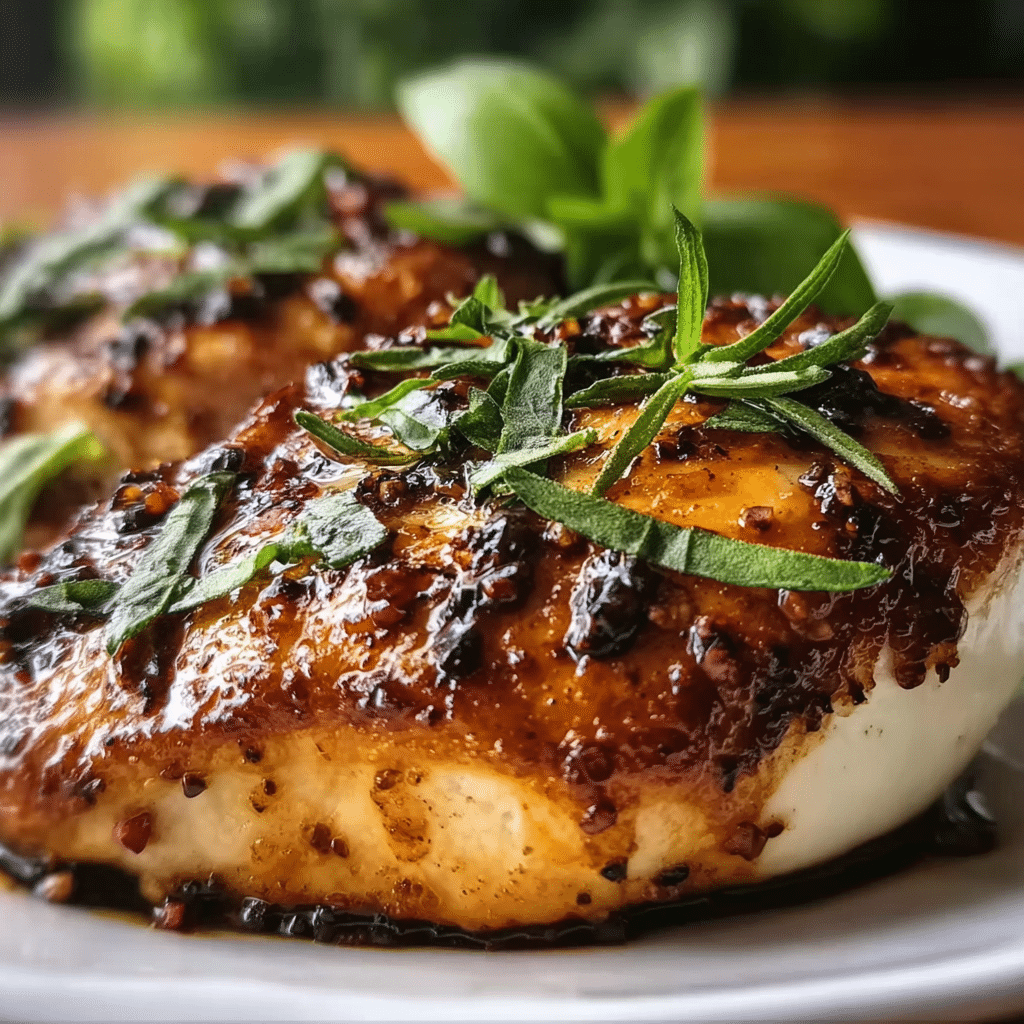
Professional Techniques
To begin, understanding the cut of chicken you’re working with is essential. I personally prefer using chicken breasts for balsamic baked chicken because they are lean and cook evenly, but you can also use thighs for a juicier result. Marinating the chicken is a game-changer. A simple marinade of balsamic vinegar, olive oil, garlic, and herbs not only tenderizes the meat but also infuses it with a depth of flavor. Aim for at least 30 minutes of marination, but for optimal results, let it sit overnight in the fridge. This allows the flavors to penetrate deeply.
When it comes to baking, preheating your oven is crucial. A hot oven ensures that the chicken cooks evenly and develops a beautiful caramelized exterior. Aim for a temperature of 375°F (190°C). Additionally, using a baking dish that is just the right size is important. If the dish is too large, the chicken may dry out; if too small, it could steam instead of bake. A glass or ceramic dish works best for this recipe.
Another insider tip is to use a meat thermometer. The ideal internal temperature for cooked chicken is 165°F (74°C). This tool takes the guesswork out of cooking and helps you avoid overcooking, which can lead to dry chicken. When your balsamic baked chicken reaches this temperature, let it rest for at least five minutes before slicing. This allows the juices to redistribute, keeping your chicken moist and flavorful.
Troubleshooting Guide
Even the most experienced cooks face hiccups in the kitchen. One common issue is chicken that turns out dry. This can happen if it’s overcooked, so always keep an eye on the time and use that meat thermometer. If you find yourself with dry chicken, don’t despair; a drizzle of balsamic glaze or a spoonful of sauce can help restore moisture and flavor.
Another common mistake is not seasoning adequately. I can’t stress enough how important it is to season your chicken before baking. Salt, pepper, and herbs should be applied generously to enhance the natural flavors of the chicken. If you forget this step, your dish may taste bland despite the delicious balsamic marinade.
Presentation Tips
Presentation is key, especially when serving guests. For your balsamic baked chicken, consider garnishing with fresh herbs like parsley or basil for a pop of color. Drizzling a bit of extra balsamic reduction over the top can add visual appeal and enhance the flavor. Pairing the chicken with colorful roasted vegetables or a vibrant salad not only adds a nutritious element but also creates a beautiful plate.
Wine pairings can elevate your meal experience. A light-bodied red wine like Pinot Noir or a crisp white such as Sauvignon Blanc complements the tanginess of the balsamic beautifully. Serve the wine chilled for the white and slightly below room temperature for the red. This attention to detail will surely impress your dinner guests.
For those meal prepping or making-ahead strategies, consider cooking a double batch of balsamic baked chicken. Portion it out for the week, and it can be easily reheated for a quick lunch or dinner. Store it in airtight containers, and it will keep well in the refrigerator for up to four days. This not only saves time but also helps in maintaining a healthy diet.
In conclusion, these professional tips and techniques are designed to help you master balsamic baked chicken. With practice, you’ll find yourself enjoying the process and creating a dish that brings warmth to your kitchen and joy to your table.
Creative Variations and Adaptations of balsamic baked chicken
One of the best things about balsamic baked chicken is its versatility. As a passionate home cook, I love exploring new flavors and adapting recipes to suit different tastes and dietary needs. Let’s dive into some creative variations and adaptations that can keep this dish fresh and exciting every time you make it.
Seasonal Variations
Seasonality plays a significant role in how we cook, and with balsamic baked chicken, you can easily swap in seasonal ingredients to enhance the dish. In the spring, consider adding asparagus or peas to the mix. Simply toss these vibrant vegetables around the chicken in the baking dish, and they will soak up the balsamic flavor as they roast.
Summer is the perfect time to include fresh tomatoes and zucchini. You can even slice the tomatoes and layer them on top of the chicken before baking. The juices from the tomatoes add moisture and flavor, creating a delightful summer meal. In the fall, try adding sliced apples or pears. The sweetness of the fruit pairs beautifully with the tangy balsamic, creating a warm, comforting dish perfect for cooler weather.
Winter calls for heartier vegetables. Think root vegetables like carrots, sweet potatoes, or even Brussels sprouts. They can be roasted alongside the chicken, creating a complete one-pan meal that is both satisfying and nourishing.
Dietary Adaptations
Dietary restrictions should never limit your culinary creativity. If you’re following a keto diet, you can adapt the balsamic baked chicken by using a sugar-free balsamic vinegar or reducing the amount of honey in the marinade. This keeps the dish low in carbs while maintaining that signature flavor.
For vegan options, while traditional chicken can’t be substituted directly, you can replace it with tofu or tempeh. Marinate the plant-based protein just like you would the chicken and bake it in the same way. The result is a deliciously tangy vegan dish that everyone will love.
Gluten-free eaters can enjoy this dish without worry, as the ingredients are naturally gluten-free. Just ensure any additional sauces or sides you serve alongside are also gluten-free.
Creative Twists
If you’re feeling adventurous, why not experiment with international flavors? A Mediterranean twist could include adding olives and feta cheese to the dish. The briny olives and creamy feta complement the balsamic beautifully and transport your taste buds to the sun-soaked shores of Greece.
For a Mexican-inspired variation, add some chopped chipotle peppers in adobo sauce to the marinade for a spicy kick. Serve the balsamic baked chicken with black beans and corn for a complete meal bursting with flavor. Alternatively, you can stir in some taco seasoning for a unique flavor profile that surprises and delights.
There’s also room for creativity in cooking methods. If you don’t have an oven, you can make balsamic baked chicken on the stovetop or in a slow cooker. For stovetop cooking, sear the chicken in a skillet, then add the balsamic marinade and cover to simmer until cooked through. In a slow cooker, simply place the marinated chicken and let it cook on low for several hours. The result is tender, flavorful chicken that practically falls apart.
Finally, let’s talk leftovers. If you have any remaining balsamic baked chicken, don’t let it go to waste! Shred the chicken and toss it in a salad, or use it as a filling for tacos or wraps. You can even add it to pasta with a light olive oil sauce for a quick and easy dinner option.
In summary, the possibilities for variations on balsamic baked chicken are endless. With a little creativity and a willingness to experiment, you can make this dish your own and enjoy it in countless ways. Each iteration brings its unique flair while keeping that delicious balsamic flavor at the forefront.
Storage, Reheating, and Meal Prep for balsamic baked chicken
When it comes to enjoying your delicious balsamic baked chicken, understanding how to store, reheat, and prep this dish is just as important as knowing how to cook it. Whether you’re planning for a busy week ahead or you simply want to make the most out of your leftovers, proper storage techniques can help you maintain the quality and safety of your food.
Short-term Storage
After preparing your balsamic baked chicken, the first step is to allow it to cool down to room temperature. This is crucial because placing hot food directly into the refrigerator can raise the overall temperature inside, potentially compromising the safety of other stored items. Once cooled, transfer the chicken to an airtight container. Glass containers are excellent for this purpose as they don’t retain odors and are easy to clean. If you’re using plastic, ensure it’s BPA-free and microwave-safe.
When storing in the refrigerator, your balsamic baked chicken can last for about 3 to 4 days. To make the most of your meal prep, consider portioning out the chicken into meal-sized servings. This not only makes it easier to reheat but also helps you avoid unnecessary food waste. Alongside the chicken, you can pair it with your favorite side dishes—like roasted vegetables or quinoa—before sealing the containers. That way, you have a complete meal ready to go!
Freezing and Long-term Storage
If you want to store your balsamic baked chicken for longer than a few days, freezing is an excellent option. To freeze, ensure the chicken is completely cooled. Then, wrap each piece tightly in plastic wrap or aluminum foil to prevent freezer burn. After wrapping, place the chicken in a freezer-safe bag or container. Don’t forget to label your containers with the date and contents—this is a little tip I swear by to keep track of what I have in my freezer!
Frozen balsamic baked chicken can last up to 3 months in the freezer. While it is safe to eat beyond this time frame, the quality may diminish. When you’re ready to enjoy your chicken again, it’s best to thaw it in the refrigerator overnight. This slow thawing process helps maintain the texture and flavor of the chicken. If you’re in a hurry, you can use the microwave’s defrost setting, but be cautious not to start cooking it in the process.
Reheating Best Practices
Reheating your balsamic baked chicken properly is vital to ensure it remains juicy and flavorful. The microwave is quick and convenient, but it can also lead to dry chicken if not done carefully. To microwave, place the chicken on a microwave-safe plate, cover it with a damp paper towel, and heat in short intervals—about 1 minute at a time—until warmed through.
Alternatively, you can reheat it in the oven to help retain moisture. Preheat your oven to 350°F (175°C). Place the chicken in a baking dish and add a splash of balsamic vinegar or chicken broth to keep it moist. Cover the dish with foil and heat for about 15-20 minutes, or until the internal temperature reaches 165°F (74°C). This method not only warms the chicken but also revives its flavors, making it almost as good as freshly baked.
When it comes to meal prep and batch cooking, balsamic baked chicken shines as a versatile option. You can easily double or triple the recipe and store portions for different meals throughout the week. Pair it with salads, wraps, or grain bowls for a variety of dishes that keep your palate excited. The possibilities are endless!
Food safety is always a priority when it comes to storing leftovers. Remember the ‘two-hour rule’: perishable food should not sit at room temperature for more than two hours. If the chicken was left out longer, it’s best to err on the side of caution and discard it. Keeping your kitchen clean and practicing good hygiene, such as washing hands and surfaces before handling food, will also help prevent foodborne illnesses.
In summary, understanding the storage, reheating, and meal prep techniques for your balsamic baked chicken can significantly enhance your cooking experience. Whether you’re enjoying it fresh or as leftovers throughout the week, these practices ensure that you savor every delicious bite!
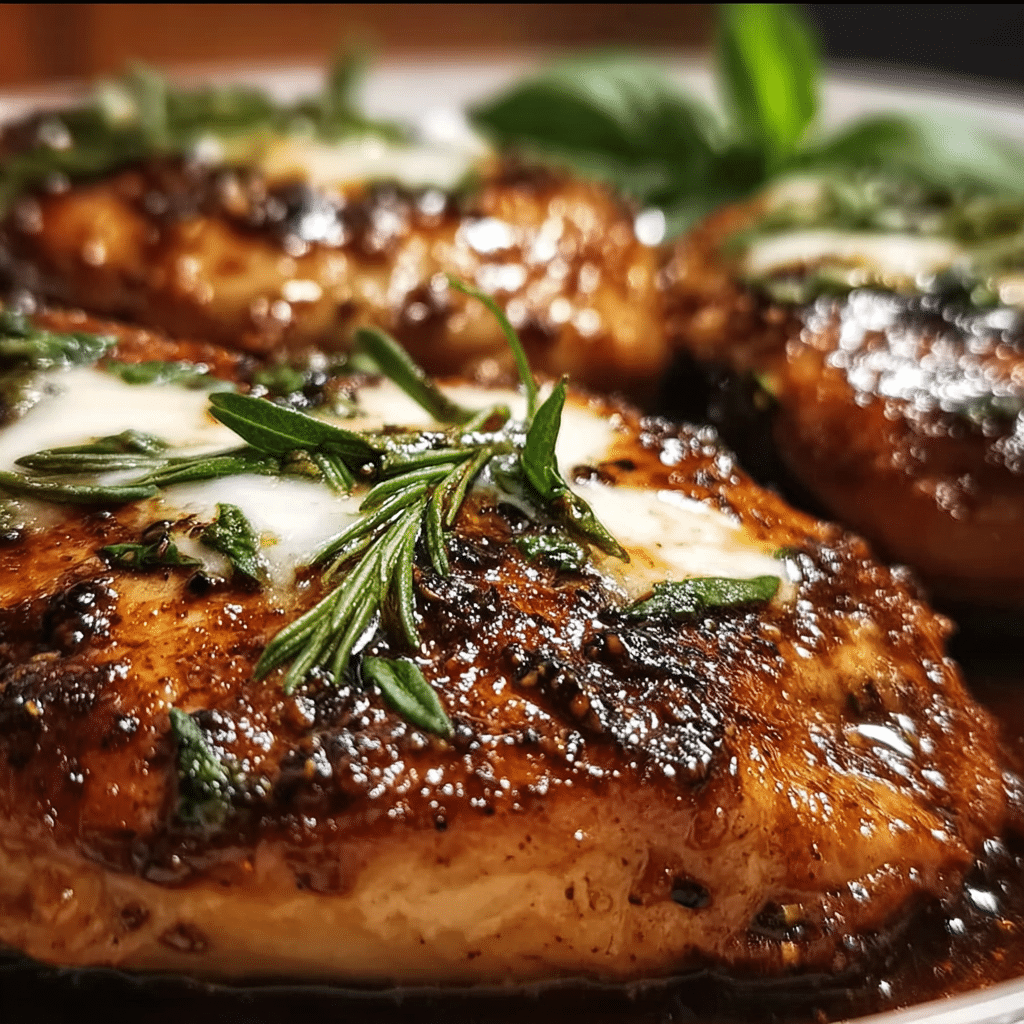
Nutritional Benefits and Health Information
When preparing a dish like balsamic baked chicken, it’s not just about the flavor; it’s also essential to understand the nutritional benefits it offers. This dish is not only delicious but can also be a healthy addition to your meal rotation, depending on how you prepare it. Let’s dive into the nutritional breakdown, health benefits, and dietary considerations associated with this delectable meal.
Nutritional Profile
A typical serving of balsamic baked chicken (around 4 ounces) contains approximately 200-250 calories, depending on the cooking method and any added ingredients. The primary macronutrients include:
- Protein: 30-35 grams – Chicken breast is an excellent source of lean protein, which is vital for muscle repair and overall health.
- Fat: 5-10 grams – This can vary based on whether you use skinless chicken or add oil for cooking.
- Carbohydrates: 4-6 grams – The carbohydrates mainly come from the balsamic vinegar, which adds a touch of sweetness without excessive sugar.
In addition to macronutrients, balsamic baked chicken is rich in various vitamins and minerals. It provides significant amounts of niacin (Vitamin B3), which plays a crucial role in energy production and DNA repair, as well as phosphorus and selenium, important for bone health and antioxidant defense, respectively.
Health Benefits
One of the standout features of balsamic baked chicken lies in its health benefits, primarily due to its key ingredients. Chicken breast, being a lean protein, helps in muscle building and weight management. Incorporating lean protein into your meals can keep you feeling fuller longer, which may assist in weight loss efforts.
Balsamic vinegar, the star of the show, is not just a flavor enhancer but also offers health benefits. It contains antioxidants that can help combat free radicals in the body. Additionally, balsamic vinegar has been linked to improved digestion and may even help regulate blood sugar levels. This makes balsamic baked chicken an appealing choice for those managing diabetes or looking to maintain stable energy levels throughout the day.
Dietary Considerations
For those with dietary restrictions, balsamic baked chicken can easily accommodate various preferences. It is naturally gluten-free and can be modified to suit low-carb or paleo diets by pairing it with non-starchy vegetables. If you’re following a Mediterranean diet, this dish fits seamlessly, especially when served with a side of whole grains or legumes.
For those who are calorie-conscious, consider using skinless chicken breast and limiting added fats during preparation. You can also explore using low-sodium soy sauce or coconut aminos as alternatives to balsamic vinegar for a different flavor profile while keeping sodium levels in check.
While balsamic baked chicken is generally considered a healthy meal, it’s essential to be aware of potential allergens. Always check labels for any added ingredients that may contain gluten or other allergens if you’re using pre-made balsamic sauces or marinades. Cooking from scratch, as many home cooks do, minimizes this risk significantly.
In conclusion, balsamic baked chicken not only delights your taste buds but also provides a plethora of nutritional benefits. The key is to be mindful of ingredients and preparation methods to maximize health benefits while enjoying this classic dish. So, whether you’re meal prepping for the week or hosting a dinner party, this dish is sure to impress both in flavor and nutritional value!
Frequently Asked Questions About Balsamic Baked Chicken
Easy balsamic baked chicken breast
This easy balsamic baked chicken breast recipe requires minimal ingredients and effort, making it perfect for weeknight dinners. Start by marinating the chicken breasts in a mixture of balsamic vinegar, olive oil, garlic, and your choice of herbs for at least 30 minutes to enhance the flavor. Preheat your oven to 400°F (200°C) and place the marinated chicken in a baking dish. Bake for 25-30 minutes or until the chicken reaches an internal temperature of 165°F (75°C). For added flavor, consider adding some cherry tomatoes or spinach to the baking dish during the last 10 minutes of cooking.
Balsamic baked chicken breast in oven
To make balsamic baked chicken breast in the oven, preheat the oven to 400°F (200°C) before preparing your chicken. Combine balsamic vinegar, olive oil, honey, and minced garlic in a bowl for a flavorful marinade. After marinating the chicken breasts for at least 30 minutes, place them in a baking dish and pour the remaining marinade over the top. Bake for 25-30 minutes, ensuring to check the internal temperature with a meat thermometer to achieve the perfect doneness. For a crispy texture, broil the chicken for an additional 2-3 minutes at the end of cooking.
Balsamic chicken breast recipe
This balsamic chicken breast recipe is both simple and delicious, perfect for meal prep or family dinners. Begin by marinating the chicken in a mixture of balsamic vinegar, olive oil, Dijon mustard, and seasonings of your choice for at least an hour. After marinating, bake the chicken in a preheated oven at 400°F (200°C) for 25-30 minutes until cooked through. Consider adding vegetables such as bell peppers or zucchini to the baking dish for a complete one-pan meal. Drizzle any leftover marinade over the chicken before serving for extra flavor.
Baked chicken with balsamic glaze
For baked chicken with balsamic glaze, the key is to create a rich and flavorful glaze that complements the chicken beautifully. Start by simmering balsamic vinegar in a saucepan until it reduces and thickens, approximately 10-15 minutes. Marinate the chicken breasts in olive oil and seasonings before baking them at 400°F (200°C) for 25-30 minutes. During the last 5 minutes of baking, brush the reduced balsamic glaze over the chicken to create a sticky, caramelized finish. Serve the chicken with a sprinkle of fresh herbs for an elegant touch.
Balsamic baked chicken breast with mozzarella cheese
Balsamic baked chicken breast topped with mozzarella cheese is a delicious twist on a classic recipe. Start by marinating the chicken in balsamic vinegar and olive oil, then bake it in a preheated oven at 400°F (200°C) for about 20 minutes. Once the chicken is nearly cooked, remove it from the oven and generously layer slices of fresh mozzarella on top. Return the dish to the oven for an additional 5-10 minutes, until the cheese is melted and bubbly. Garnish with fresh basil for a flavorful finish.
Easy balsamic chicken recipe
This easy balsamic chicken recipe is perfect for those busy weeknights when you want a delicious meal without spending hours in the kitchen. Combine balsamic vinegar, olive oil, and your favorite spices in a bowl to create a simple marinade. Let the chicken soak in the marinade for 30 minutes before placing it in a baking dish. Bake in a preheated oven at 400°F (200°C) for 25-30 minutes, and for added flavor, you can toss in some seasonal vegetables. Serve the chicken with a side of rice or quinoa to soak up the flavorful juices.
Oven baked balsamic chicken thighs
To prepare oven-baked balsamic chicken thighs, start by marinating the thighs in a mixture of balsamic vinegar, olive oil, garlic, and herbs for at least 1 hour to maximize flavor. Preheat your oven to 425°F (220°C) for a crispy outside. Place the marinated chicken thighs in a baking dish and bake for 30-35 minutes, or until the internal temperature reaches 175°F (80°C). Consider searing the chicken thighs in a hot skillet for 2-3 minutes before baking to achieve a golden crust. Serve with a side of roasted vegetables for a hearty meal.
What to serve with balsamic chicken
When serving balsamic chicken, consider pairing it with side dishes that complement its tangy and savory flavors. Roasted vegetables, such as asparagus, Brussels sprouts, or carrots, make a great accompaniment, adding both color and nutrients to your meal. A simple salad with mixed greens, cherry tomatoes, and a light vinaigrette can provide a refreshing contrast. For a heartier option, serve the chicken over a bed of quinoa or rice, allowing the grains to soak up the delicious balsamic juices. Don’t forget to include a crusty bread or garlic bread on the side to complete the meal!


